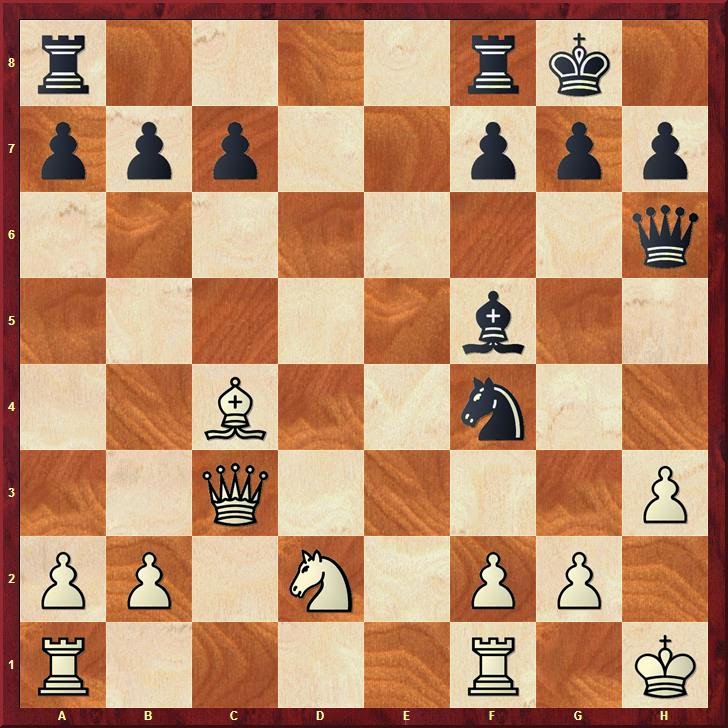I am not finished with Morphy. Two more of his games crop up in Ziyatdinov's list as games 22 and 23. Morphy's eighteen games from the First American Chess Congress have become part of my teaching curriculum for youth players receiving individual instruction. Three of these are among the selections in GM-RAM. I have a yearning, but not yet a firm commitment, to work through all of the available Morphy games along with the annotations in Philip Sergeant, Morphy's Games of Chess; Macon Shibut, Paul Morphy and the Evolution of Chess Theory; and Valeri Beim, Paul Morphy: A Modern Perspective.
Studying Saint Amant -- Morphy, Paris 1858 this past week drove me to my bookcase where an old text had been accumulating dust.
White to move
From this position, Saint Amant played 17.Kh2, and the game continued 17...Rad8 18.Rad1, resulting in position 165 in GM-RAM. It is at this point that Philip Sergeant offers, "White's feeble play, which is not what one would have expected from St. Amant, gives Morphy an opportunity for a neat combination" (Morphy's Games of Chess, 150).
I spent some time exploring 17.Rad1 as an alternative for White. Three Black replies seemed worth examining.
a) 17...Bxh3 as in the game, fails. 18.gxh3 Nxh3 19.Kg2 Nf4+ 20.Kg1 Qg5 21.Qg3 and Black's attack has been parried. Materially, three pawns for the piece may give Black some endgame chances, but with all the major pieces on the board, White is better. Black could eliminate the queens with 21...Qxg3, but the rooks remain and White's pieces are more active.
b) 17...Nxh3 seems promising. 18.gxh3 Bxh3 19.Rfe1 Bg4+ 20.Kg2 Bxd1 21.Rxd1 and Black has a material advantage, while White's king remains vulnerable to attack.
c) 17...Rad8 seems best. After 18.Nb3, Black can sacrifice the knight on h3. 18...Nxh3 19.Rxd8
Black to move
19...Nf4+ is better than 19...Rxd8 because of 20.gxh3.
After mulling through these possibilities, it occurred to me that additional work would be useful on h3/h6 sacrifices. I remembered that Laszlo Polgar, Chess Training in 5334 Positions (1994) has a section in the back of the book devoted to such sacrifices. Pulling it off the shelf, I discovered that positions 4663-4762 are h3/h6 combinations. Polgar presents entire games with a diagram in each case immediately prior to a sacrifice on h3 or h6. There is plenty of study material there to occupy my time.
















No comments:
Post a Comment